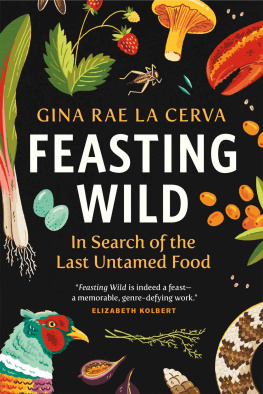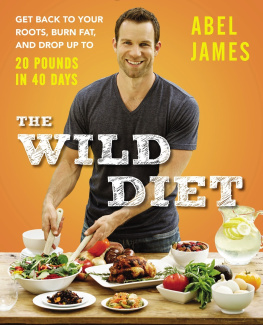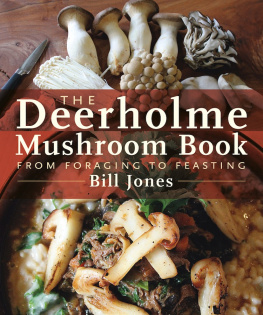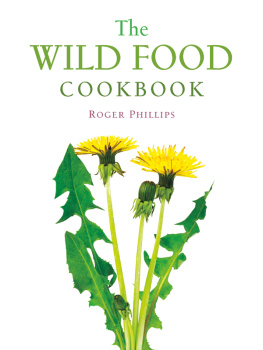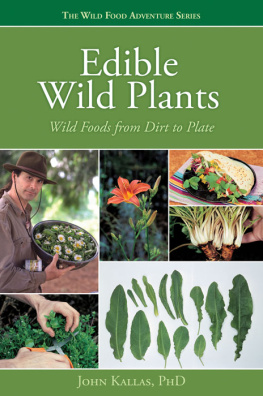PRAISE FOR FEASTING WILD
Feasting Wild is indeed a feasta memorable, genre-defying work that blends anthropology and adventure, love and loss. Gina Rae La Cerva is a keen observer and a wonderful writer.
ELIZABETH KOLBERT,New York Times bestselling author of The Sixth Extinction
A curious, passionate, and beautifully poetic book. La Cerva uncovers something essential about our enduring desire for wildness in a world where it is rapidly vanishing.
JAMES PROSEK, artist and author of Trout: An Illustrated History
Intrepid anthropologist Gina Rae La Cerva has set herself what some might consider a Sisyphean task: to seek out, and where possible, savor, what remains of the wilds on a planet comprehensively domesticated by Homo sapiens. What she discoverswhether its wild boar in a Polish forest, birds nests in Borneo, or love as she investigates the culture of bushmeat in the Congois the human passion for an untamed world that survives, against all odds, amidst our monocultures and megacities. By turns lyrical, melancholy, and invigorating, Feasting Wild is an enthralling and necessary meditation on what it means to love the feral in a world increasingly of our making.
TARAS GRESCOE, author of Possess the Air, Straphanger, and Bottomfeeder
This book pulled at my heartstrings and awakened a deep hunger for connection: to the foraged foods that once sustained us but have become lost or commodified, to my landscape and community, and to the wild nature that surrounds us all.
ANDREA BEMIS, author of Dishing Up the Dirt
This is the food book Ive always wanted to reada witty, illuminating, and beautifully written travelogue that rightly centers the historical role of women and the importance of Indigenous knowledge. Throw away the trite faux-wisdom of dietitians and gorge yourself instead on the charming platter that Gina Rae La Cerva has served up.
ED YONG, author of I Contain Multitudes
It is rare these days to find a food book with a truly original take on food. Feasting Wild gives you a great deal to think about and at the same time is a pleasure to read.
MARK KURLANSKY,New York Times bestselling author of Salmon and Salt
Feasting Wild is a rich literary banquet, its pages a smorgasbord of intrepid travelogue, unflinching memoir, and keen ecological history. Where the worldviews of Cheryl Strayed and Michael Pollan converge, youll find this perceptive, big-hearted, beautifully crafted book.
BEN GOLDFARB, author of Eager
La Cervas engrossing book celebrates wild-harvested food but also mourns it, showing how plentiful staples have dwindled time and again to overexploited luxuries. Mixing memoir, travelogue, and environmental history, Feasting Wild is a lyrical and lucid exploration of hunger and fulfillment, richly detailed and beautifully told.
THOR HANSON, author of Buzz and The Triumph of Seeds
La Cerva is a modern-day hunter-gatherer, scouring the planet to bring us delicious stories and lessons about our world. Her writing is original and thought-provoking, and even though its not always palatable how weve transformed our native flora and fauna, her adventurous storytelling is endlessly satisfying.
DANIEL STONE, author of The Food Explorer
An extraordinary book, full of powerful, troubling, and important stories, beautifully evoked. My mouth watered, my mind expanded, and my heart broke and was remade through this superb writing. A must-read demonstration of how our senses and desires are entangled with the justice and wellbeing of lifes community.
DAVID GEORGE HASKELL, author of The Forest Unseen
Copyright 2020 by Gina Rae La Cerva
20 21 22 23 24 5 4 3 2 1
All rights reserved. No part of this book may be reproduced, stored in a retrieval system or transmitted, in any form or by any means, without the prior written consent of the publisher or a license from The Canadian Copyright Licensing Agency (Access Copyright). For a copyright license, visit accesscopyright.ca or call toll free to 1-800-893-5777.
Greystone Books Ltd.
greystonebooks.com
Cataloging data available from Library and Archives Canada
ISBN 978-1-77164-533-1 (cloth)
ISBN 978-1-77164-534-8 (epub)
Editing by Paula Ayer
Copy editing by Linda Pruessen
Proofreading by Stefania Alexandru
Jacket design by Michelle Clement and Nayeli Jimenez
Illustrations by Michelle Clement
Text design by Nayeli Jimenez
Greystone Books gratefully acknowledges the Musqueam, Squamish, and Tsleil-Waututh peoples on whose land our office is located.
Greystone Books thanks the Canada Council for the Arts, the British Columbia Arts Council, the Province of British Columbia through the Book Publishing Tax Credit, and the Government of Canada for supporting our publishing activities.

For my parents, Laura and Victor, and for my sisterwhom I know by many names.
CONTENTS
Prologue
HEARTBREAK MOOSE
IN THE MIDDLE of July, I invite some friends over to eat Heartbreak Moose.
I light the BBQ and a few candles. A kousa dogwood tree casts shadows over our dinner party. The occasional errant seedpod bounces among the plates and silverware.
I have smuggled the Heartbreak Moose meat back from Swedenfrozen, vacuum-sealed, and hidden between sweaters in my suitcase. When I went through customs at JFK, I was as nervous as a novice drug runner.
I prepare the Heartbreak Moose as small burgers, mixing the wild meat with pork lard, caramelized onions, pressed garlic, and herbs my sister grew. As I cook, I remember watching the animal die in a lush forest next to a misty lake. I serve the burgers on toasted buns with shiitake mushrooms and heirloom tomatoes from a farm on a marsh river down the road. We taste the untamed. I think of the man who killed the beast. We digest my grief into a million little morsels.

For 99 percent of our history, humans ate hunted and gathered foods. Hunters patterned their lives after the lives of the animals they pursued. Gathering tied us to places and seasons. As recently as two hundred years ago, nearly half the North American diet still came from the wildvenison, game fowl, abundant and cheap seafood, even turtle in some places. Today, most people will never eat anything undomesticated or uncultivated. Eating something truly untamed has become incredibly rare.
What was once sustenanceand often associated with poverty and subsistenceis now becoming a luxury. The top restaurants in the world serve gathered weeds to their elite clientele. Foraged flavors and gamey flesh have become marks of wealth, refinement, and purity. The price of wild caught fish is much higher than farmed fish, and steadily on the rise. And the most desirable wild foodslike game meat from tropical rainforests and edible birds nests from Southeast Asiaare becoming globally traded commodities associated with black markets, counterfeit products, and violence. At the same time, those who still depend on wild foods for survival are finding their lifestyles rapidly changing, even in the most remote of places.

